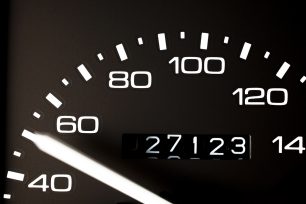A vehicle bill of sale is an important legal document when a used car’s ownership transfers between two people. If you’re buying or selling a car through a dealer, the bill of sale takes the form of a purchase contract created by the dealership. But when a private owner is selling (or giving) a car to another individual, the seller is responsible for creating a bill of sale to record the details of the private sale.
Is a Bill of Sale for a Car Purchase Required?
Only 16 states have a state law requiring a bill of sale to transfer vehicle ownership . But even if you live in a state that doesn’t require one, a bill of sale is an important document to have for both the buyer’s and seller’s protection. As an example, if you sell a car and the next owner has an accident or commits a crime in the vehicle, the bill of sale is proof you didn’t own the vehicle at the time of the incident. A bill of sale can also serve as additional proof of ownership and to document the purchase price for a new buyer, prior to the title transfer.A bill of sale for private car transactions is required in the following states:
- Alabama
- Arkansas
- Colorado
- Connecticut
- Hawaii
- Idaho
- Maine
- Nebraska
- New York
- Ohio
- Rhode Island
- South Dakota
- Vermont
- Washington
- West Virginia
- Wyoming
What Information Does a Bill of Sale Contain?
Because a motor vehicle bill of sale is a legal document , it should include the following information:- The vehicle’s model year, make, model name, trim, body style, and color
- The vehicle identification number, or VIN
- The vehicle’s license plate number and state
- The vehicle’s certificate of title number
- The odometer reading at the time of the sale
- The vehicle’s actual mileage if different from the odometer (if known)
- Any liens, encumbrances. or outstanding loans, including lienholder name and amount
- The terms of the sale or title transfer, including sale price and warranty coverage (if any)
- The date of the sale or transfer
- The purchase price
- The seller’s name and mailing address
- The buyer’s name and mailing address
- The seller’s signature
- The buyer’s signature
- It would be prudent to also include a statement saying “Both the buyer and seller declare under penalty of perjury that all stated information on this Bill of Sale is true”
What Is an Odometer Disclosure Statement and Do I Need One?
As noted above, when a car transfers ownership the odometer reading should be recorded on the bill of sale . An odometer disclosure statement is not required when transferring vehicle ownership , and it can be incorporated into a bill of sale or noted on the vehicle’s title. But whether it’s incorporated into the bill of sale, specified on the title, or created as a separate document, it is the seller’s responsibility to inform the buyer if a vehicle’s odometer does not reflect the car’s actual mileage.A separate Odometer Disclosure Statement can be used to confirm a vehicle’s odometer represents its true miles. It can also be used as a disclaimer to state the odometer does not reflect the vehicle’s true miles. If the odometer is not accurate, having this extra level of documentation is prudent. As with the bill of sale, a separate odometer disclosure statement should contain all the basic vehicle information as well as the seller’s and buyer’s name and contact information. Both state-specific and federal odometer disclosure statement forms are available online.
Using a Vehicle History Report to Confirm an Odometer Reading
A vehicle history report can help sellers and buyers verify a vehicle’s odometer reading . iSeeCars’ VIN Report offers a wide range of vehicle information, including market value analysis, ownership history, theft and recall status, and odometer readings during past vehicle service. The latter can help validate a used car ’s current odometer reading .
A Recreated Window Sticker Can Supplement Vehicle Documentation
A vehicle history report can be combined with a recreated window sticker to provide additional documentation and peace of mind for a seller or a buyer. A window sticker can confirm a car’s original price and equipment, along with its warranty information, fuel efficiency estimates, and safety ratings.
Is There a Printable Bill of Sale Template?
Vehicle bill of sale forms are available from several sources, including legal websites, Department of Motor Vehicle (.gov) websites, and document programs like Adobe, Google Docs, and Microsoft Office. We created a vehicle bill of sale template for you to download and use.
How To Use a Bill of Sale?
Once a bill of sale has been created and signed by both parties, the new owner will need it and the vehicle’s title (also properly signed by the buyer and seller) to initiate the transfer of ownership . The buyer’s local DMV can process the transfer of local and out-of-state titles.The DMV will issue a new title, along with a new vehicle registration and license plate. Some states’ DMV offices may also need to see a driver’s license as part of the transfer process. Be prepared to pay the sales tax and registration fees during the transfer process at the DMV.


































































